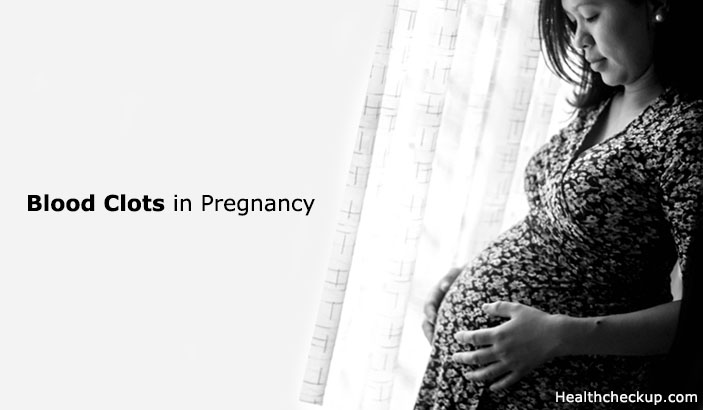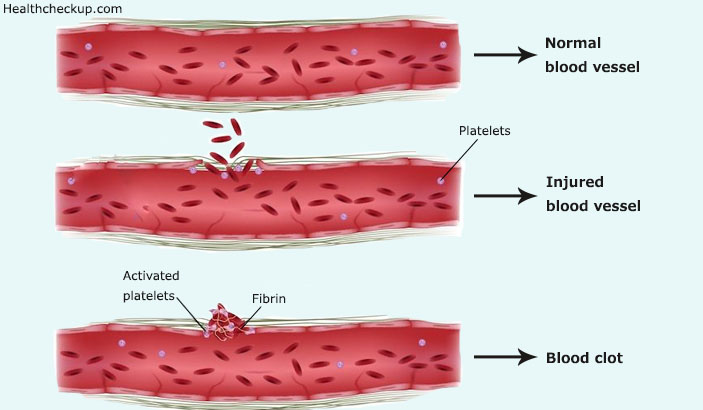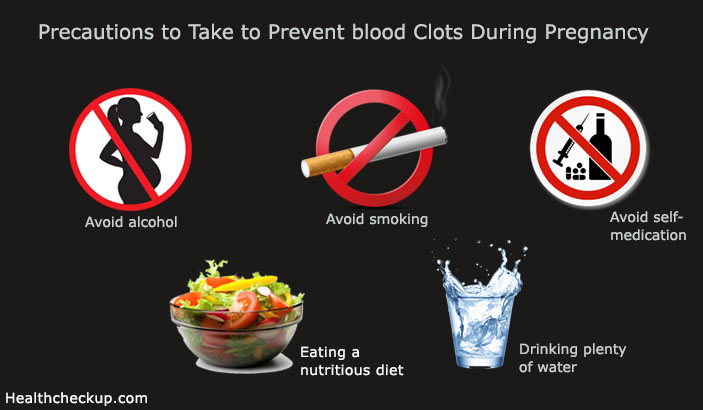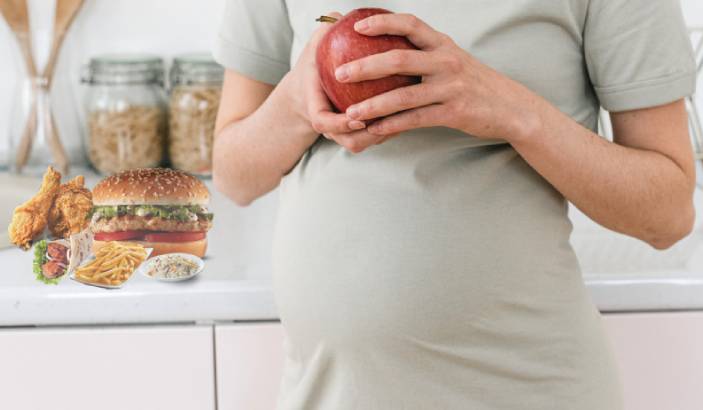Before trying to understand why blood clots occur during pregnancy, it is important to know that in a normal, healthy individual, blood with its components (red blood cells, white blood cells, and platelets) flow freely in circulation.
How Do Blood Clots Occur?
Clotting of blood is also known as Coagulation. Therefore, disorders which cause blood clots to occur within circulation are called as the Hyper Coagulable States.
Our liver produces 13 clotting factors which are responsible for a normal clotting cascade (except for one clotting factor). Proteins, Vitamin K and Calcium are an essential nutrient in a normal clotting cascade.
Normally, when an injury occurs with a breach of skin and tissues, these clotting factors get activated which cause platelets to aggregate and form a fibrin mesh at the site of injury. When the breached portion gets blocked, it prevents further loss of blood plasma, proteins, infection, and healing occur.
Once healed completely, blood clots get resolved within the blood itself. This is the normal process which occurs inside the body of an apparently healthy individual.
However, in some individuals, blood clots begin to develop within the circulation itself. These clots tend to block blood vessels and cause corresponding symptoms. Often, blockage of blood vessels in vital organs becomes fatal and these conditions require emergency medical care.
Why Does Blood Clot Within Circulation?
A clot inside a blood vessel is called a Thrombus, and the process of forming is known as Thrombosis. These blood clots can block the blood vessel partially or completely. When a part of this thrombus gets dislodged and flows into circulation, it is called an Embolus. This process is called Embolism or Thromboembolism.
How are Blood Clots Formed?
Hypercoagulable states are generally inherited (present since birth). They may also be acquired. The number of causes enlisted further will help you understand where do the blood clots come from and how do they develop.
Causes of Blood Clots to Occur Abnormally are:
- Genetic Disorders: like Factor V Leiden, Prothrombin gene mutation and Antiphospholipid Antibody syndrome.
- Deficiencies: Proteins that prevent clotting – Protein C, Protein S and Antithrombin.
- High Levels: High levels of fibrinogen (responsible for clotting), Plasminogen Activator Inhibitor (PAI) and Homocysteine (high level makes blood vessels more prone and increases the risk of tissue injury due to depleted oxygen)
- Trauma or Surgeries
- Intravenous or Intra-Arterial Catheterization
- Conditions like Prolonged Bed Rest, Obesity and Pregnancy
- Drugs: Oral contraceptive pills, Hormone Replacement Therapy (HRT), thalidomide, heparin or low molecular weight heparin, tamoxifen, bevacizumab and lenalidomide.
- Bone Marrow Disorders: Polycythemia Vera.
- Illnesses: HIV, Inflammatory Bowel Syndrome (IBS), Nephrotic syndrome and paroxysmal nocturnal Haemoglobinuria.
Who are at risk for developing blood clots during pregnancy?
Blood clots in legs during pregnancy occur more frequently during the last or first trimester of pregnancy.
During pregnancy, due to the enlarged size of the uterus, back flow of blood to the heart reduces, and blood tends to pool in the legs. Stasis of blood in legs causes the veins to swell and become painful.
Women at Risk for Developing Blood Clots when Pregnant are:
- Those who have a significant family history of DVT
- Women having pre-existing medical conditions are at higher risk.
- Obese women
- More than 35 years of age.
- Long travels during pregnancy
- Women who smoke
- Sitting for a long duration.
- Multiple pregnancies.
- Having a Caesarean section increases the risks of developing blood clots during pregnancy.
Signs and Symptoms for Blood Clots During Pregnancy
- Enlarged veins of legs.
- Pain in legs, especially while walking.
- Skin over the affected leg may be warm to touch.
- Chest pain, sudden shortness of breath and coughing up of blood is an alarming sign of pulmonary embolism.
Problems Associated with Blood Clotting When Pregnant
Clotting of blood during pregnancy, although a rare phenomena, it is one of the leading causes of death. Blood clots during pregnancy pose a threat to the pregnant woman as well as her child. It occurs in 1-2 out of about 1000 pregnant women.
- Miscarriage
- Blood clots in placenta reduce blood supply to the baby.
- Intra-uterine growth retardation, premature birth or still birth (death of a child in the womb).
- Pre-eclampsia
- Pulmonary thromboembolism
- Myocardial infarction or heart attack
- Stroke
Precautions to Take to Prevent Blood Clots During Pregnancy
Although, preventing an abnormal bleeding during pregnancy is not preventable, yet, a few measures can be taken to minimize the risks of developing blood clots during pregnancy.
- Avoid sitting for long durations and avoid long distance traveling
- Avoid sitting cross-legged
- Eating a nutritious diet with vitamins and minerals
- Avoid smoking and alcohol during pregnancy
- Drinking plenty of water
- Avoid self-medication at any cost. Always take medicines only after consulting with your physician
Diagnosis:
1. A complete blood count with bleeding and clotting times and a D-Dimer level.
2. Lower limb venous and arterial Doppler for women at risk.
3. Venography is the standard diagnostic test to detect blood clots in legs during pregnancy.
4. Magnetic Resonance Imaging (MRI) is considered more reliable for blood clots in legs and pelvis.
Treatment of Blood Clots During Pregnancy
For women who have a history of blood clots, the physician may advise a small dose of blood thinners and they are closely monitored. These may be:
- Anti-Platelet Agents: These reduce the ability of platelets to form clots.
- Heparin: This reduces the action of several clotting factors, keeping the blood thin.
- Low Molecular Weight Heparin (LMWH): This is a safer form of heparin which does not require frequent monitoring. These have to be injected beneath the skin.
- Vitamin K Antagonist: This is usually the last drug of choice since it has potential side effects on both women and the child.
- Compression stockings may be advised as an additional measure. This creates pressure and keeps the blood flowing.
- Early mobilization after a Caesarean section delivery.
- Blood thinning agents are discontinued at least 24 hours prior to delivery.
- Certain home remedies such as garlic and turmeric are equally helpful.
Bleeding during pregnancy can be just spotting or heavy, similar to menstrual bleeding. Blood clots can also occur with a back pain or abdominal pain.
A vaginal bleeding or blood clot discharge during pregnancy is the first sign of miscarriage. It may occur in cases of ectopic pregnancy (a pregnancy that occurs outside the uterus) or due to an irritable or inflamed cervix. It is abnormal and of a grave emergency and immediate medical attention must be sought.
Medically Reviewed By
Dr. Himanshi is a Homoeopathic consultant and currently working as a lecturer in Post-graduate faculty of Homeopathy, Parul University, Vadodara. Completed BHMS and MD in Homeopathy in January 2018 and also has a clinical experience of about 6 years. Personal interests include reading, spending time with family and traveling.











